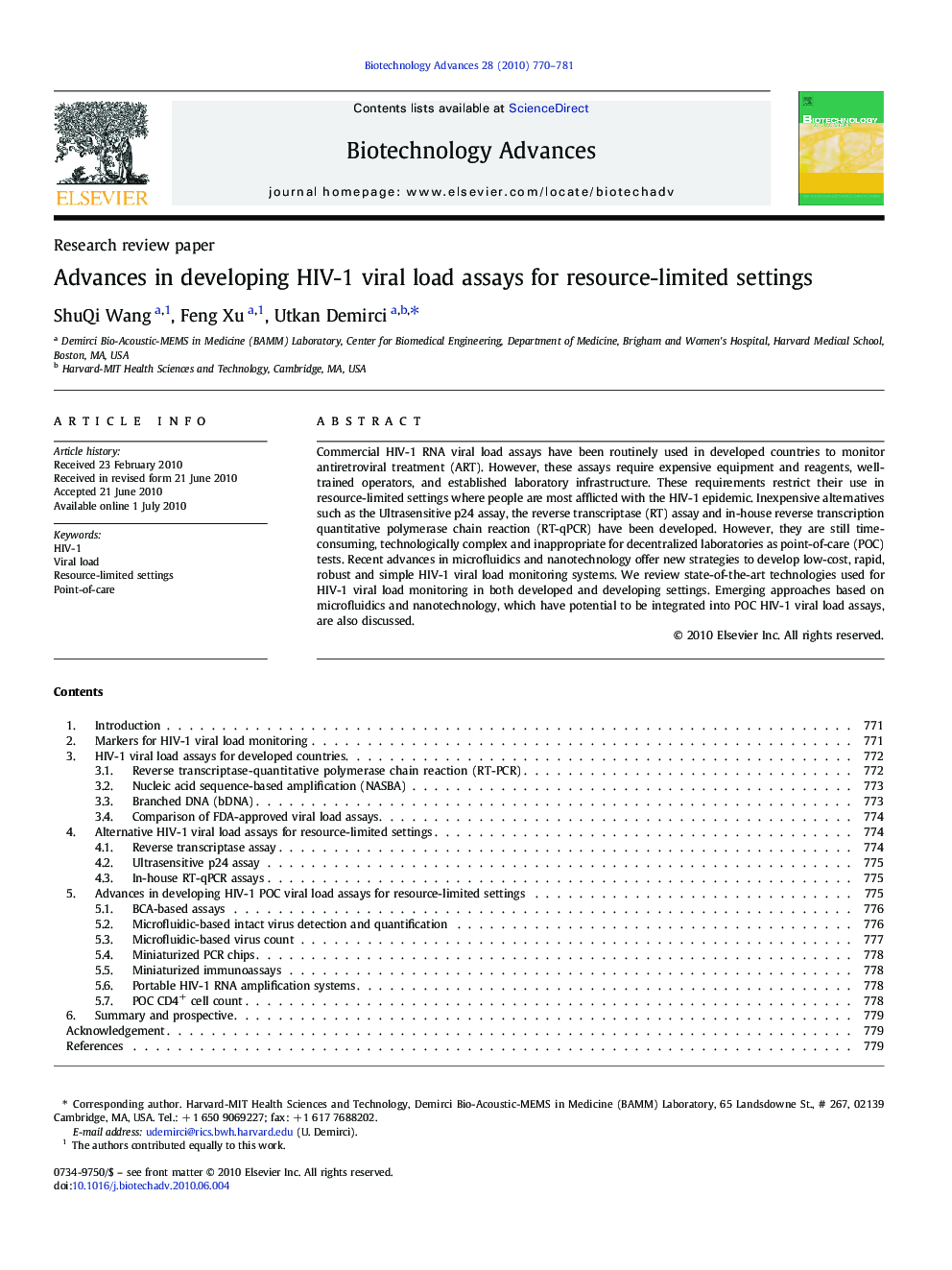| Article ID | Journal | Published Year | Pages | File Type |
|---|---|---|---|---|
| 14424 | Biotechnology Advances | 2010 | 12 Pages |
Commercial HIV-1 RNA viral load assays have been routinely used in developed countries to monitor antiretroviral treatment (ART). However, these assays require expensive equipment and reagents, well-trained operators, and established laboratory infrastructure. These requirements restrict their use in resource-limited settings where people are most afflicted with the HIV-1 epidemic. Inexpensive alternatives such as the Ultrasensitive p24 assay, the reverse transcriptase (RT) assay and in-house reverse transcription quantitative polymerase chain reaction (RT-qPCR) have been developed. However, they are still time-consuming, technologically complex and inappropriate for decentralized laboratories as point-of-care (POC) tests. Recent advances in microfluidics and nanotechnology offer new strategies to develop low-cost, rapid, robust and simple HIV-1 viral load monitoring systems. We review state-of-the-art technologies used for HIV-1 viral load monitoring in both developed and developing settings. Emerging approaches based on microfluidics and nanotechnology, which have potential to be integrated into POC HIV-1 viral load assays, are also discussed.
